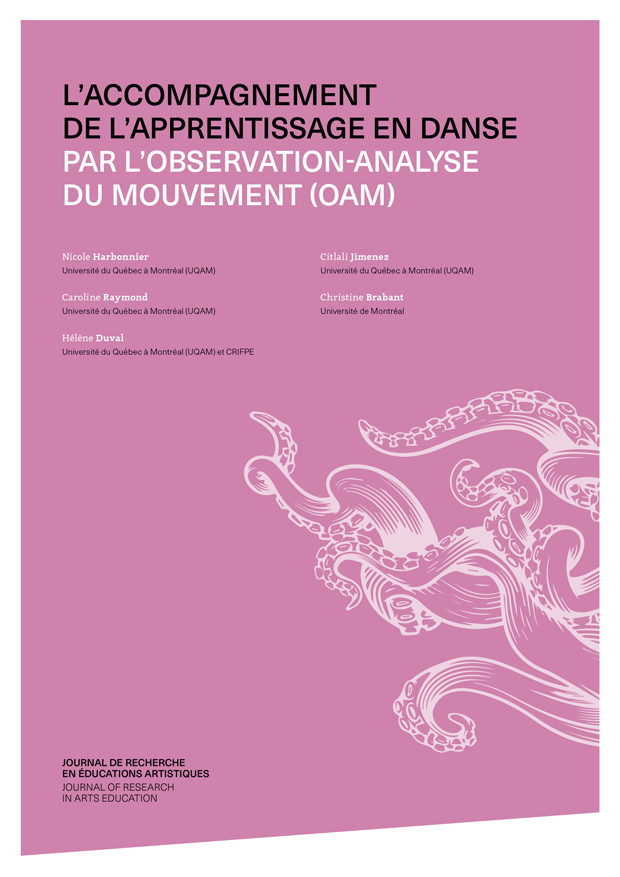L'accompagnement de l'apprentissage en danse par l'observation-analyse du mouvement (OAM)
DOI:
https://doi.org/10.26034/vd.jrea.2024.4727Keywords:
dance teaching, learning guidance competency, movement observation competency, observation-analysis of movementAbstract
Our research, conducted with ten dance teachers in schools, colleges and universities in the Montreal area (Quebec, Canada), aims to document their use of qualitative movement analysis knowledge in their teaching. In particular, we aim to enhance, question and explore how this knowledge is understood by the participants and mobilized in their classrooms. The main benefits of this knowledge, according to four participants’ testimonies targeted in this article, concern their observation and communication skills, which influence an enlightened guidance of students’ learning supported by an “ethic of sensitivity” (Kuypers & Godard, 2021).

Downloads
Published
Issue
Section
Categories
License
Copyright (c) 2024 Nicole Harbonnier, Caroline Raymond, Hélène Duval, Citlali Jimenez, Christine Brabant

This work is licensed under a Creative Commons Attribution 4.0 International License.
The CC-BY licence authorises the sharing and adaptation of the document provided that the work is credited, a link to the licence is included and it is indicated whether any modifications have been made.


